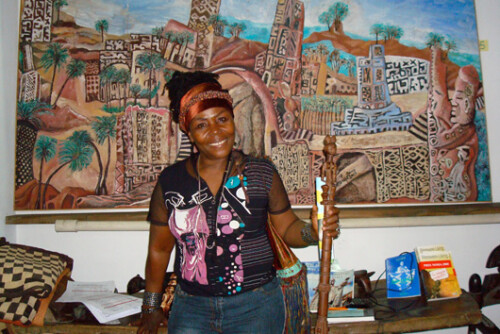In part what is remarkable about the form’s success is its ability to integrate specifically national contexts in appealing to a growing world market. The specificities of national and pan-regional life are constantly highlighted, flattened, recoded, and recuperated in the telenovela’s cycles of production and reception. The celebrity of Angélica María and Andrés García each provides a case in point of transnational hemispheric circuits of media and bodies, both elided and recoded within the primordial mix of the telenovela’s competing socialities. María, popularly known as “La Novia de Mexico” (Mexico’s sweetheart), is the New Orleans-born daughter of German-American musician Arnold Federic Hartman and Mexican mother Angelíca de Jesús Ortiz Sandoval. María has enjoyed a varied career, starring, since childhood, across mediums and genre, including not only the telenovela but film and musical theater, proving as adept at romantic comedy as she is in melodrama. García, on the other hand, built his celebrity primarily on the strength of his telenovela performances as a macho playboy (an iconography supplemented by his off-screen exploits and history of scandals). However, like María, García is not native to Mexico, moving there as a child. Born in Santo Domingo, his Caribbean origin arguably haunts the evolution of his celebrity in Mexico, imbuing him (despite his Spanish heritage—both parents hail from Spain) with a hypersexuality typically mythologized onto the African body. This sexual mythology has manifested in typecasting as well as his extracurricular notoriety, whether it be gossip about the size of his penis or his role as a spokesperson for “La Bombita,” an inflatable prosthetic implant promoted as a solution to impotence. Although publicizing his need for a sexual prosthetic would seem a risky career move, one that might impugn his famed virility, the notoriety that followed from his advertising of the Bombita served instead to fuse his personality and celebrity even further to a mythic penis.
The Africanist presence in Mexican melodrama, however, as made obvious from the various productions of Angelitos negros between 1948-1997, has a longer, often less metaphoric history. Toni Morrison describes the Africanist presence in U.S. American literature and culture: “Race has become metaphorical—a way of referring to and disguising forces, events, classes, and expressions of social decay and economic division far more threatening to the body politic than biological ‘race’ ever was.”1 The presence of black characters (whether portrayed by black actors or by white actors in blackface) functions ironically to elide the existence of an Afro Mexican population. The persistent exoticization of the black body within Mexican telenovelas expunges the Afro Mexican body from the nation. In other words, the Africanist presence in a Mexican telenovela like Angelitos negros is embodied by U.S. and Cuban black women (Rita Montaner, Juanita Moore, Celia Cruz) who simultaneously also function to metaphorically represent (and diminish) the threat of Mexico’s internal racial heterogeneity, whether that be its minority Afro Mexican presence or even the mestizaje celebrated in nation-founding narratives.
National orders of racial and gender subordination are reinforced, challenged and recoded in the circulation of the telenovela hemisphircally and globally. As the poignant entry from the website Alma Latina attests, the telenovela stirs complex, even contradictory, identifications that may confound accepted theories of racial formation in the Americas. The anonymous response also reminds us that it is important for studies of melodrama to recall the popular roots of the genre (or mode) not only in Hollywood but throughout the American hemisphere, including its roots in folk traditions such as the corrido and the vallenato. Her struggle speaks to what Martín-Barbero suggests as “the secret connection between melodrama and the cultural history of the Latin American ‘sub’-continent,” what ultimately for both Martín-Barbero and the anonymous respondent amounts to a struggle for recognition.
- Toni Morrison, Playing in the Dark: Whiteness in the Literary Imagination. New York: Vintage, 1992: 63. [↩]




